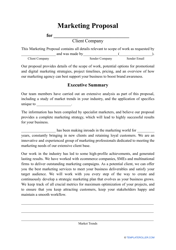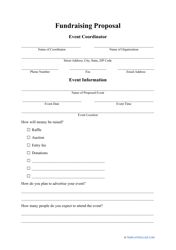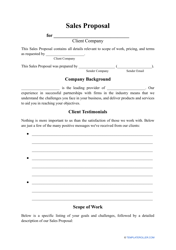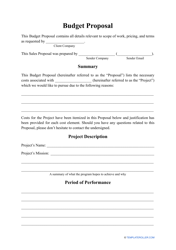What Is a Proposal: Free Proposal Template

Congratulations! You’ve started your very own business and now your client base is slowly starting to grow. Do you know that you can be doing even better? Professionally-written proposals can often be the difference between a stagnating and rapidly growing business.
So, what is a proposal? A formal proposal is a document that you send out to clients in order to persuade them to work with you. A solid proposal outlines the unique features and value of the product or service you offer and can help successfully bridge the gap between your business and a prospective customer.
What Is the Purpose of a Proposal?
A good proposal is, first and foremost, a sales document and should serve the purpose of incentivizing a client to purchase goods or services from you.
Around half of all of your successful transactions will start with a business proposal. Ideally, the document should include a thorough and well-written description of your unique product along with a detailed estimate of costs, quotes from subcontractors, and a markup of your personal profit. If the proposal includes a section for the client’s signature, it can legally be used as a work contract without having to draft an entirely separate agreement for services.
There are several main types of proposals in business:
- Business Proposal. This type of proposal is a generic document commonly used by B2B companies to promote and sell their services and goods. Similar to a marketing plan, this proposal will outline what the business does and what its selling points are.
- Bid Proposal. These are sent as a response to a project open for bidding. This proposal provides an explanation of the services the business offers and is used to distinguish it from the competitors bidding on the same project.
- Fundraising Proposal. A fundraising proposal is used mainly by non-profits in order to solicit funds for a publically-beneficial event or cause.
- Budget Proposal. These proposals focus mainly on the financial aspects of the services a company provides.
- Sponsorship Proposal. This, essentially, is a pitch used to persuade another party to give you their financial support.
- Marketing Proposal. This refers to a business proposal used for online and offline marketing projects.
- Sales Proposal. Similar to a business proposal, this document is most commonly used by sales teams, consultants, and agencies.
- Program Proposal. This type of proposal focuses more on the client’s objectives and goals and provides a proposed solution.
- Work Proposal. Used interchangeably with “Business Proposal” and “Program Proposal.”
Using a premade proposal template will save you both your time and effort when sending out all of the various types of proposals to your clients. You might need to change up the wording for every specific case: treat each proposal like a marketing brochure. The text has to be engaging, well-written, and must advertise your business in the best way possible.
Proposals, Quotes, Estimates, and Bids
Knowing the difference between a project proposal, quote, estimate, and bid may prove to be crucial to the success of your business. Let’s go over each topic in depth:
- Estimate. This is a non-binding document that you give to your client to show the amount they will be required to pay for the goods or services you supply. The numbers shown on the estimate may differ from what the client will actually have to pay. The exact amount will be detailed on the invoice they will receive when the project is done.
- Quote. Otherwise referred to as a quotation, this formal document lists the exact price of every product or service you offer (think of it as a menu for your business). If the client agrees to work with you after receiving your quote, you will be obligated to supply the services at the prices listed within.
- Bid. A bid is the exact opposite of a proposal. It’s an offer made by an individual or a company to purchase certain goods or services or to complete a contract for a project. The bid will either specify the amount the individual or business is willing to pay or the conditions under which they will be ready to take on a proposed project.
What Is an Unsolicited Proposal?
Generally, all proposals can be divided into two main categories: solicited proposals and unsolicited proposals.
The solicited proposal format implies that it already has been requested by the client (either personally or through media outlets or advertisements). Unsolicited proposals are similar to cold calls - they are sent to customers who may potentially be interested in the goods or services the company provides. Their goal is to spike the attention of a customer who does not anticipate the proposal but may be convinced of working with the company.
Additionally, unsolicited proposals may be used to advertise or promote certain products and can act as marketing material. They are distributed through existing mailing lists as leaflets or brochures and may vary depending on the targeted segment.
Writing a proposal like this requires a great amount of talent. The document - its text, graphics, and visual design - only has a few seconds to capture the reader's attention and keep them engaged enough to continue reading. The proposal must demonstrate an innovative solution to the client’s problem and has to highlight the company’s unique ability to provide the proposed services.
How to Decline a Proposal?
Now that we’ve learned how to make a proposal, let’s see how to go about turning down an incoming business proposal from a third party. Chances are, your business will receive several proposals on a weekly or even daily basis. Only a select few will be a good fit for your business.
There are several reasons why you would choose to decline a proposal. The advertised product might just not be useful to your business. Even if the product is useful, it may be significantly out of your budget. In some cases, investing in a useful and budget-friendly product may not be a good strategic move.
Here’s how to say no to a proposal in a polite and professional way:
- Start your email by addressing the sender of the proposal. Include their name and the name of their business (if specified).
- Write down the day the proposal was received and the day it was rejected.
- Specify the reason for rejection. This will help build a friendly rapport in case you end up working together in the future and will also help the company do better in future proposals.
- End the letter by thanking the sender for their efforts and professing your willingness to work with them if another opportunity comes up.
Related Topics:






